Winter is rose-planting time, and to help you make the most of these much-loved flowers, we’ve put together all the
information you need. Armed with some growing advice you'll be picking armfuls in no time at all.
I get up early most warm-weather mornings to tend my garden, especially my roses. At this time of day the fragrance at
it’s best as I clip and prune, and tie runaway stems back in position. I never tire of this routine: it’s never a
chore to water, feed and prune roses because they are so rewarding.
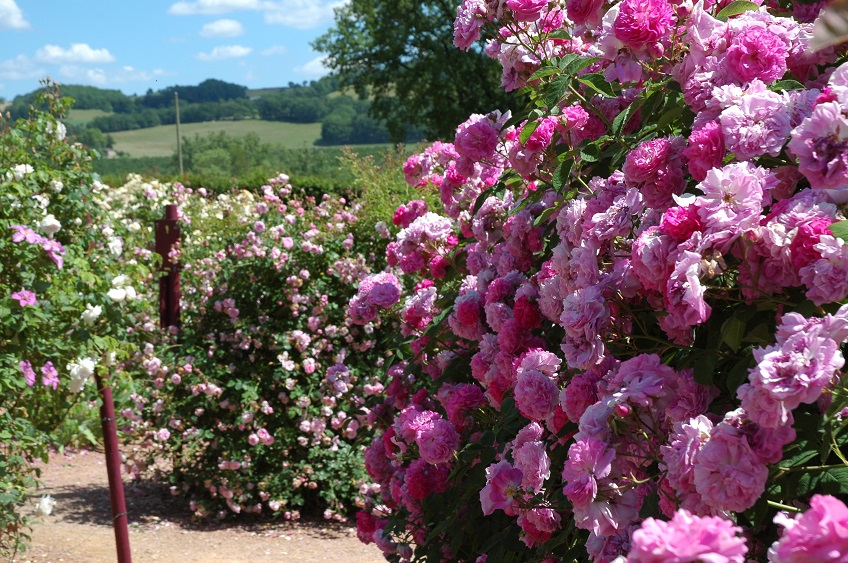
Labyrinthe des Roses. Photo - Linda Ross
There are roses for nearly every occasion. You can grow them as miniatures, as borders, as shrubs, as informal hedges, as climbers, along fences and swags,
against walls, up pillars, over arbours. And of course you can grow roses in tubs.
Roses can be purchased in two ways: in pots that can be planted out year-round; and in the cooler months you also find them in nurseries, bare-rooted.
The rose is dormant, the soil is removed and the bare rose roots are packaged in sphagnum moss.
To plant a bare-rooted rose soak the rose in bucket of water while you dig a broad hole. Mix the garden soil with a soil conditioner, such as compost.
Sprinkle fertiliser over the base of the hole and make a small mound in the hole, with your improved soil. Spread the roots of your rose over the mound.
Backfill with improved soil, leaving a saucer depression around the stem. Water in with seaweed solution, until air bubbles stop rising. Water carefully
for six weeks, until your rose is established.
My top rose tips:
1. The most effective way to water roses is by hand using a watering can. This gives each rose a deep drink, which encourages roots to grow deep. You can
add a capful of seaweed solution to enhance this watering, and provide nutrients to the root system, which in turn makes stronger, more disease-resistant
roses.
2. Prevention is better then cure! When it comes to roses this is the golden rule. Once insects and diseases are established, they can be difficult to
control so one of your best tools is a good sprayer. Choose one with pump action as hand sprayers encourage RSI.
3. After years of trials, I’ve found pelletised fertilisers offer the bet results. These include Sudden Impact for Roses, Organic Life and Dynamic Lifter
for Roses. The pellets contain a mixture of poultry manure, fish meal, seaweed, blood and bone. They need moisture to decompose and release their nutrients.
4. It’s best to think of bush roses as shrubs, and use them with other plants to make up a flower border. Bush roses planted in a bed with other roses
and no other plants, are uninteresting. Create pretty garden pictures with roses and other plants offering interesting variation in texture and height.
Also use bush roses as informal hedges to define areas.
5. I like to plant roses with bearded iris, dianthus, cosmos, cleome, penstemon, catmint, sedum, sea lavender (statice) salvia, lambs ears and succulents.
Forget-me-nots, columbines and foxgloves all flower in spring unison with roses. Late summer and autumn flowering dahlias will prolong the colour into
the cooler months.
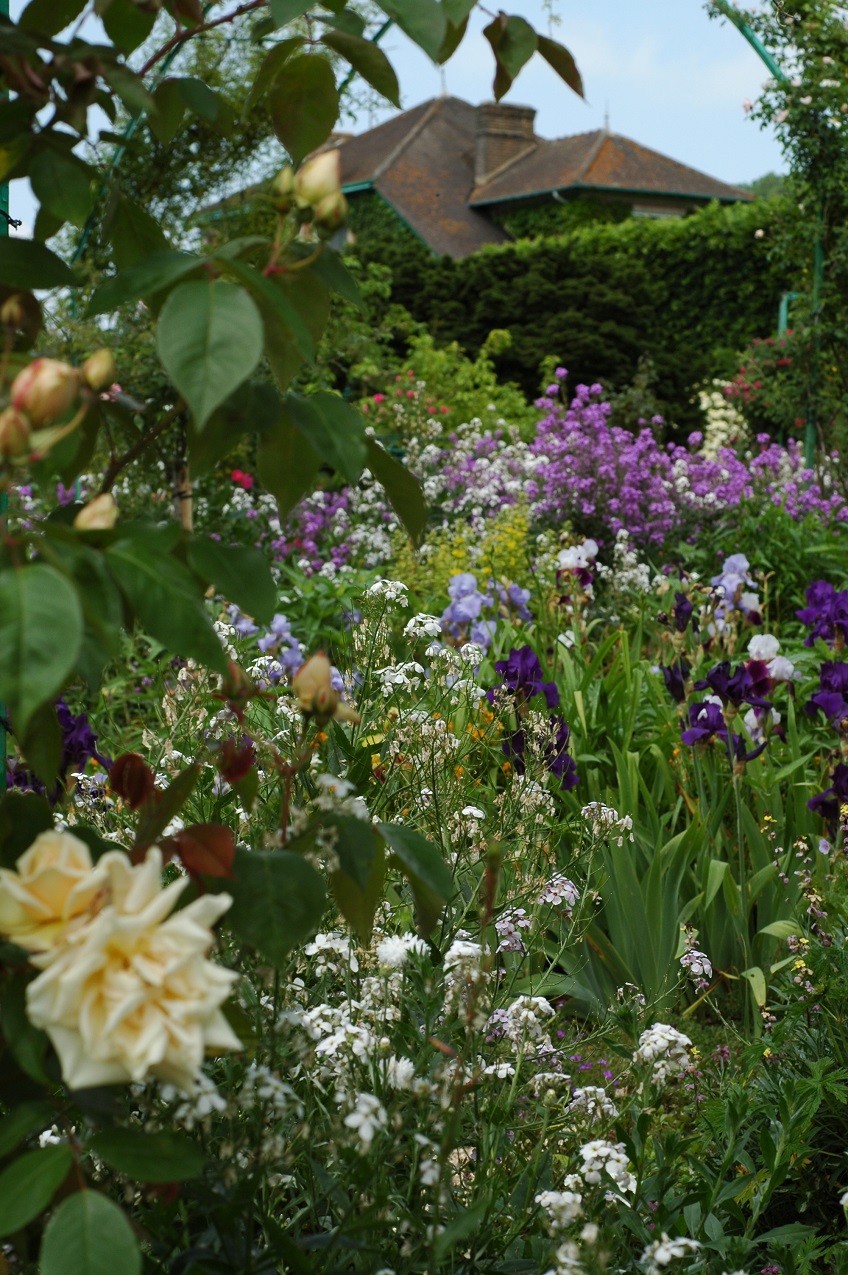
Rose companions - honesty and iris at Giverny. Photo - Linda Ross
6. It is easy to grow roses in pots. Just find a sunny spot, choose a decent-sized pot, fill with good quality potting mix and be prepared to water every
second day in summer and to feed more frequently.
7. Boundary fences make great vertical spaces to train climbing roses. We suggest growing them with Clematis viticella cvs or the white wisteria
(which is less vigorous than the purple) for great colour and flower combinations that extend the flowering time of your garden. Over the 30-odd I
have been growing roses, I have come to the conclusion that climbers are the best value: so many blooms for so little effort. Climbing roses can be
trained to grow anywhere: up a decorative iron pillar for pretty vertical effects; along chains for a swag effect; against a wall for a flat floral
feature; or over arbours and arches for decorative effect.
8. If you are gardening in extreme dry areas of Australia choose drought-hardy roses. Our favourite is ‘Duchesse de Brabante’, a vigorous, spreading, free-flowering
tea rose with large, soft-pink, cupped blooms, lightly fragrant. With healthy foliage and graceful habit, it grows 1.5 x 1.5m. ‘Mutabalis’ (China)
is another vigorous shrub rose that will grow to 3m, and is almost evergreen. Exquisite “butterfly-like” flowers open yellow, turn pink then crimson,
giving a marvellous multi-coloured flowering. It is a sport of ‘Old Blush’ introduced into Britain in 1789.
Some favourites:
‘Just Joey’ (Hybrid Tea): Apricot-peach with a coppery tint, the flowers are the size of dinner plates with a delicious ruffled petal
edge. Grows to 90cm. Developed in 1973. Fragrance is musk. Continuous flowering. Good cut flower. One of the top ten sellers.
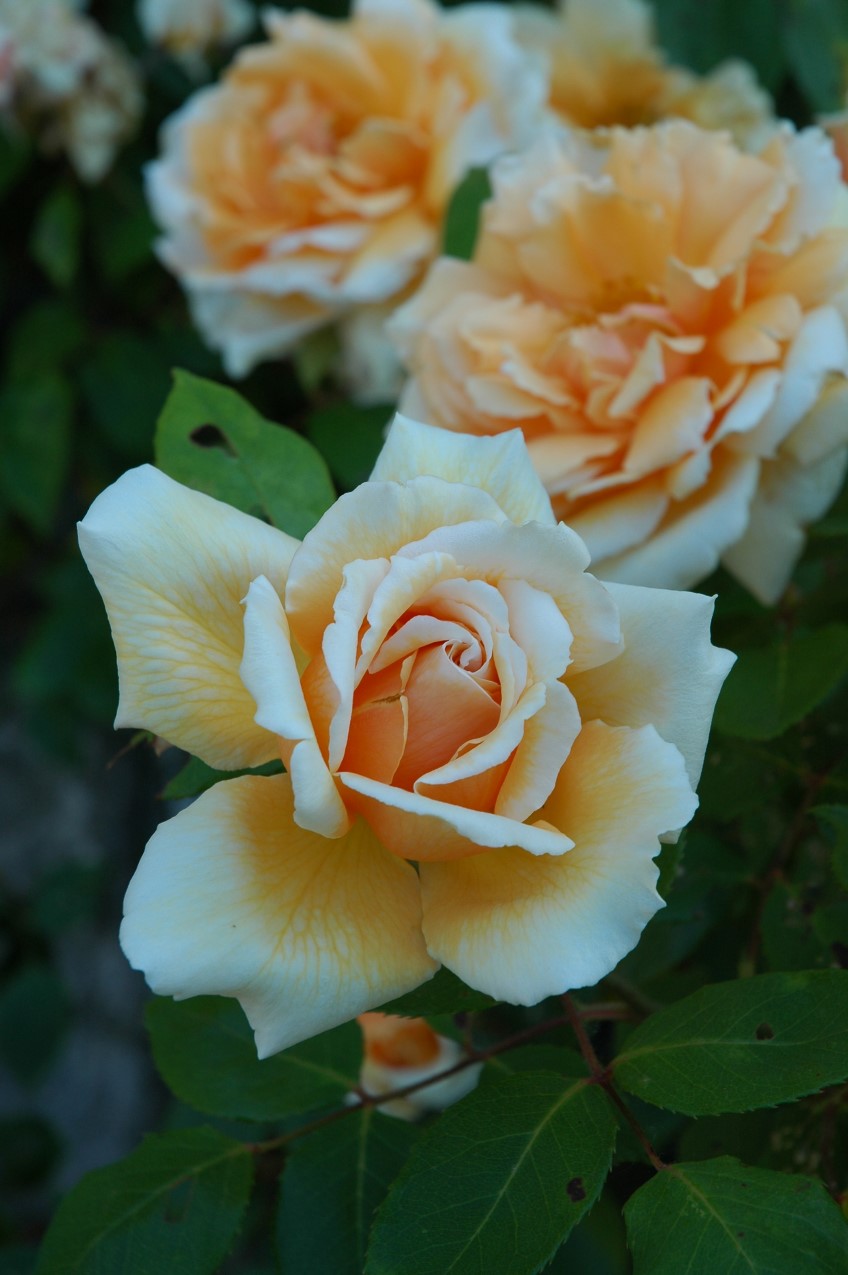
Just Joey. Photo - GAP Photos
‘Mr. Lincoln’ (Hybrid Tea): The first and the best red rose. Shaped like a goblet and one the best of the perfumed reds. Velvet petals.
A rose with individual flowers on long stems. One of the top ten sellers. Grows to 1m.
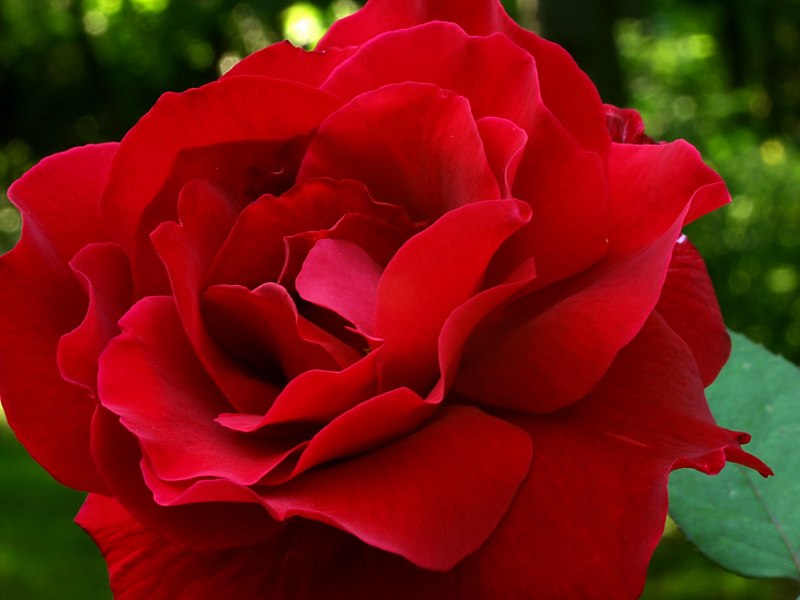
Mr. Lincoln. Photo - GAP Photos
‘Mutabalis’ (China): A vigorous shrub rose that will grow to 2m and is almost evergreen. Exquisite winged-butterfly flowers open yellow,
turn pink then crimson, giving a marvelous multi-coloured flowering. It is a sport of ‘Old Blush’ introduced into Britain in 1789. Makes a great drought-tolerant
hedge.
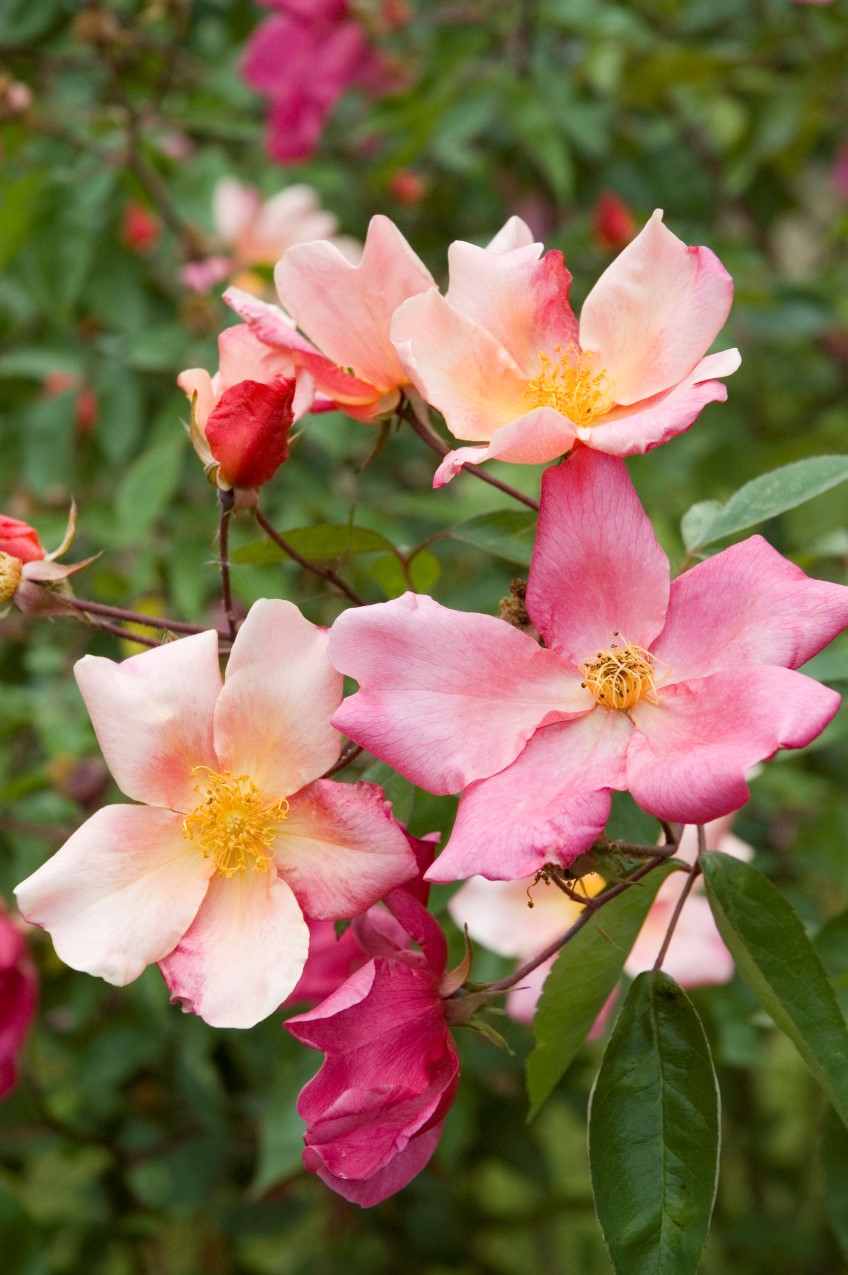
Mutabilis. Photo - GAP Photos
‘Mary Rose’ (English Rose): a clear pink multi-petalled rose, one of the of the most widely grown English Roses. It forms a good bushy
shrub and blooms throughout the summer. The delicious fragrance is of Old Rose character, with a hint of honey and almond blossom. 1m high.
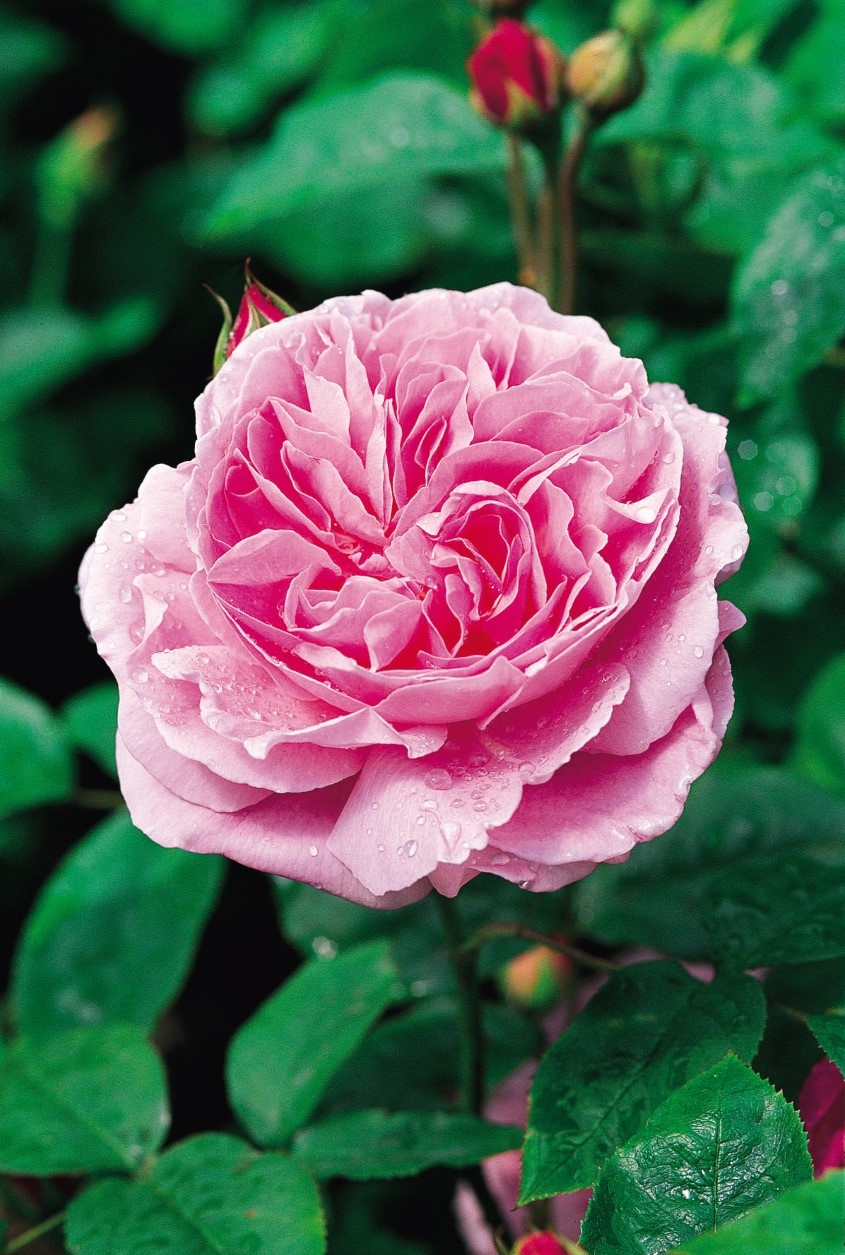
Mary Rose. Photo - GAP Photos
‘Red Pierre de Ronsard’ (Cluster) this is from the breeders of Pierre de Ronsard, the Meillands. Lots of deep-red, double cupped flowers.
Repeat flowerer. Climber to 3m. Prune hard back to its main stems in winter. With regular fertilising you can have blooms for 8-9 months of the year.
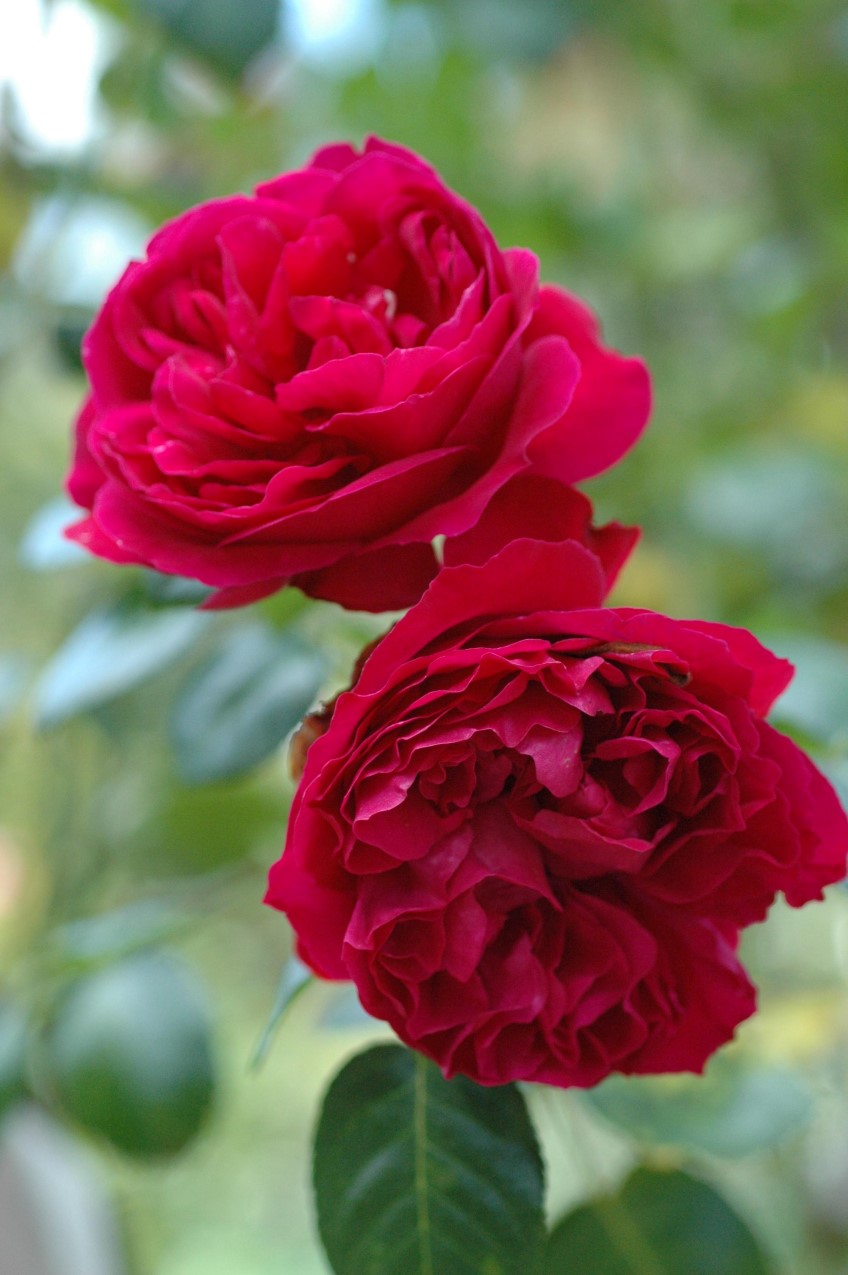
Red Pirerre. Photo - GAP Photos
‘Golden Celebration’ (English Rose): along with Gold Bunny and Graham Thomas this is one of the three best golden yellows. It’s one of
the largest-flowered English Roses. It forms a nicely rounded, slightly arching shrub with ample foliage. Reliable and easy to grow. The flowers are
initially tea-scented but often develop a wonderful combination of sauterne wine and strawberry.
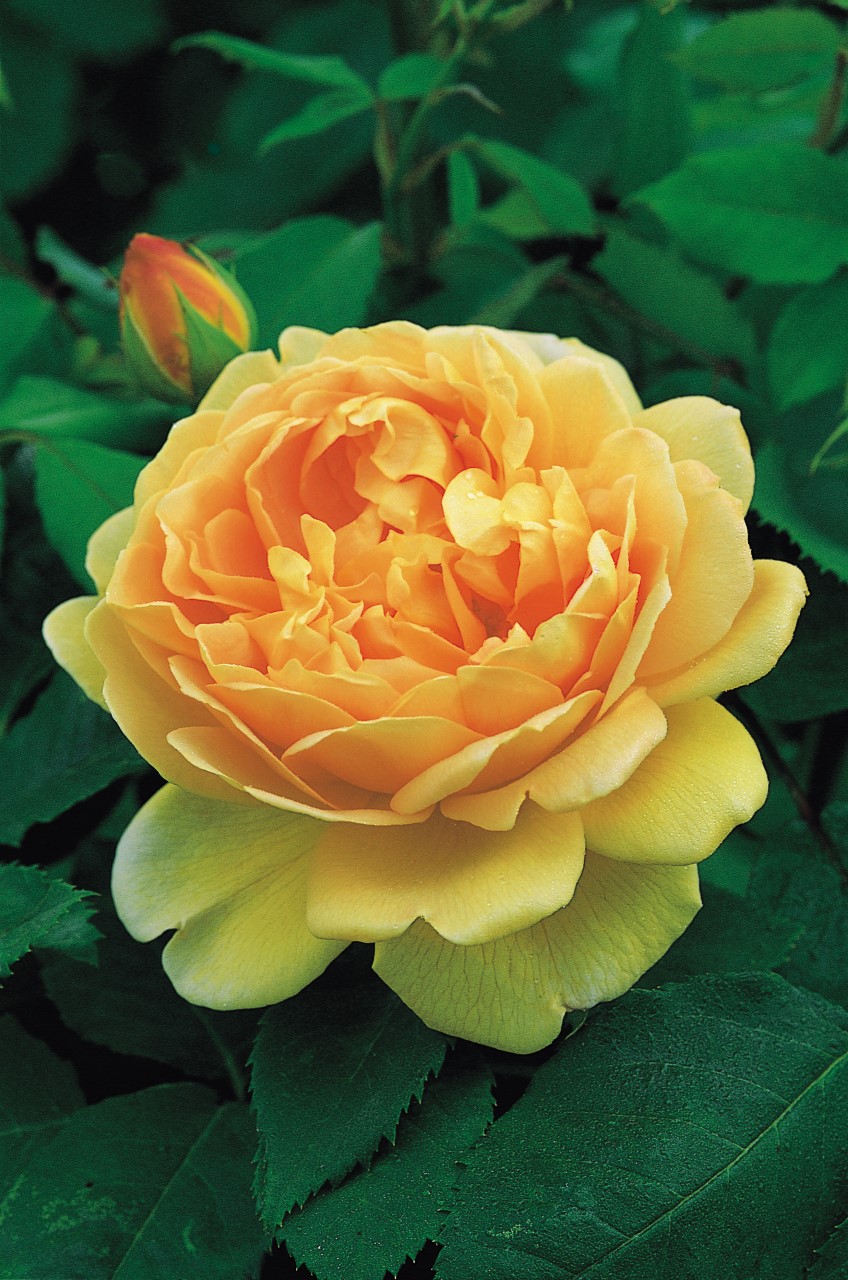
Golden Celebration. Photo - GAP Photos
‘Abraham Darby’ (English Rose): apricot and yellow tinged with pink. The large, deeply cupped blooms appear throughout summer. An excellent
vigorous tall shrub or short climber, 2-3m with glossy foliage. A rich, fruity fragrance.
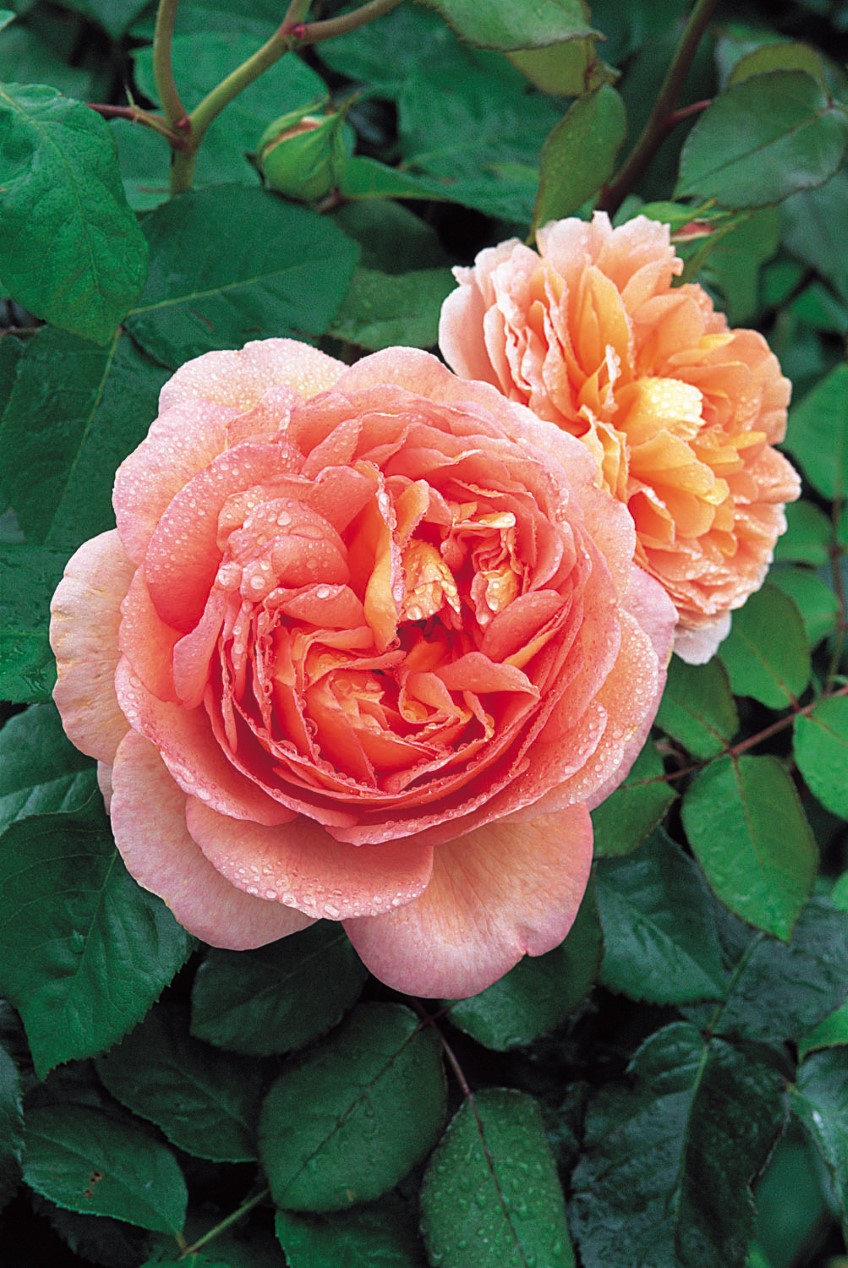
Abraham Darby. Photo - GAP Photos
‘Princesse de Monaco’ (Hybrid Tea):was introduced by Marie-Louisette Meilland in 1981 in France and named in honour of Princess Grace.
Its ivory blooms have deep-pink edges. A hardy, branching rose with dark green leaves. Flowers have pointed buds. Grows to 1m.
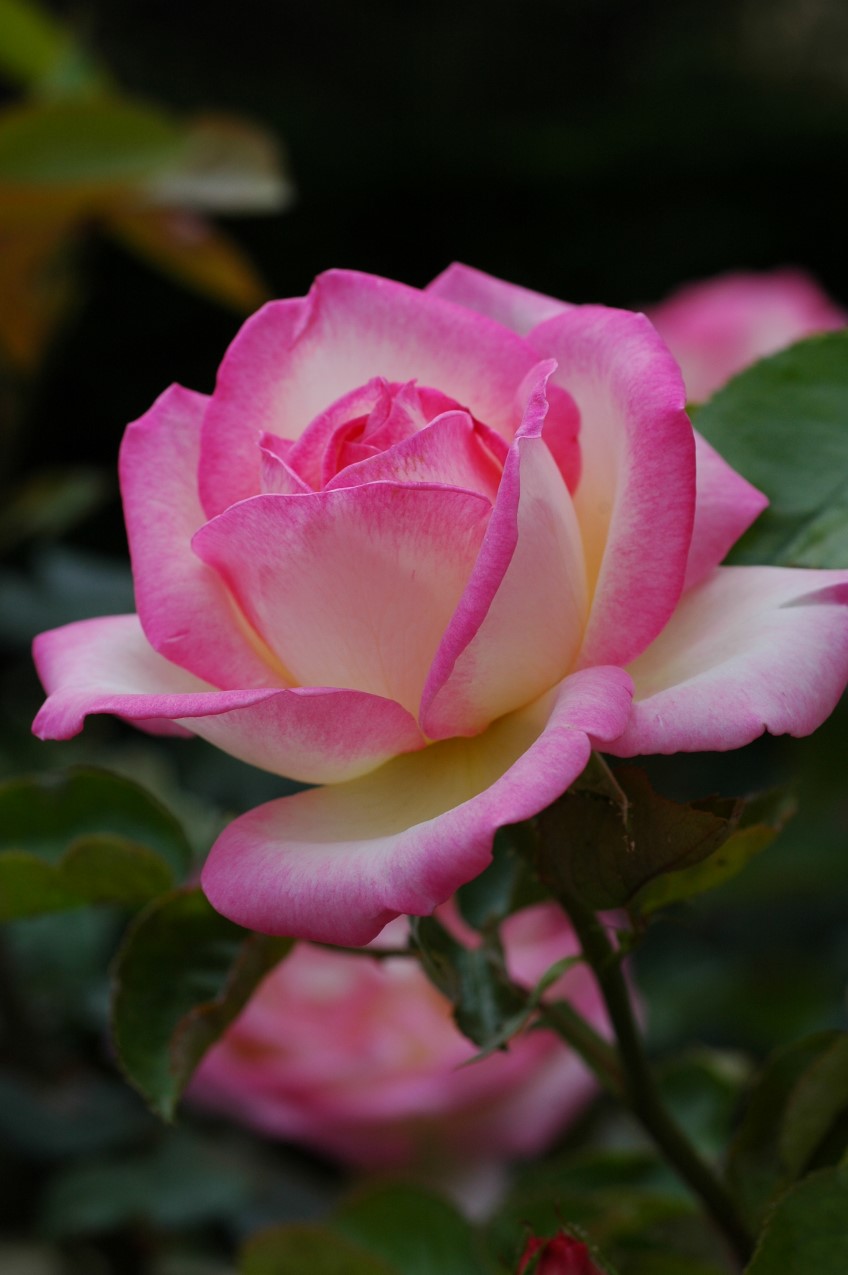
Princesse de Monaco. Photo - GAP Photos
‘Iceberg’ (Cluster): the most popular rose due to its vigorous growth and prolific flowering. Cream to white flowers appear in large clusters
from spring to winter. Even plants less than a year old may exhibit hundreds of blooms on clusters of three to seven buds. Light fragrance. Shrub,
climber or lollipop standard. Stops flowering only to flower again!

Iceberg. Photo - GAP Photos
Text: Sandra Ross